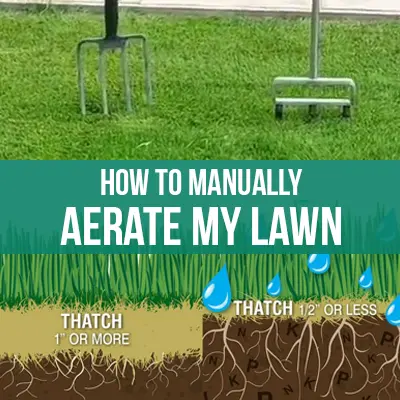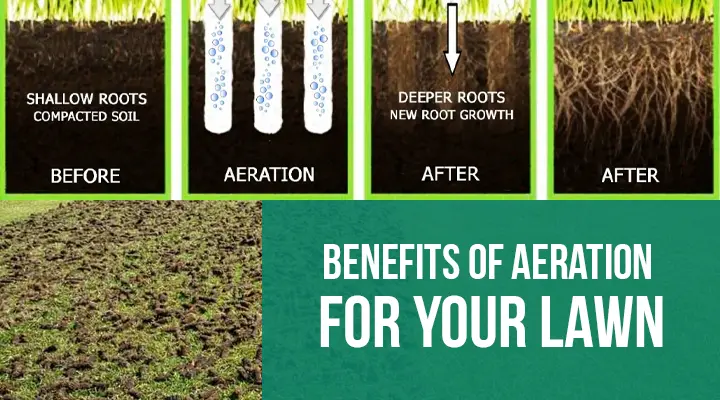
You can use a garden fork or a manual aerator tool. By inserting the fork or the tool into the ground, you create small holes that allow air, water, and nutrients to reach the grass roots.
Having a lush, thriving lawn is the dream of every homeowner. However, over time, the soil can become compacted, leading to poor air circulation and limited nutrient absorption. This can result in a dull, unhealthy-looking lawn. One effective way to combat this issue is through lawn aeration.
Aeration involves creating small holes in the soil to allow air, water, and nutrients to reach the grassroots. While there are various methods to aerate a lawn, manual aeration is a simple, cost-effective option that can be easily done by homeowners. We will discuss the steps to manually aerate your lawn using a garden fork or a manual aerator tool, ensuring that your lawn stays healthy and vibrant.
Benefits Of Aeration For Your Lawn

Aeration offers several advantages for your lawn:
| Improved Nutrient Absorption | Enhanced Water Infiltration | Reduced Soil Compaction |
|---|---|---|
| Aerating your lawn manually allows essential nutrients like oxygen, water, and fertilizer to penetrate the soil more effectively. This promotes healthier root growth and nutrient absorption by the grass, resulting in a greener and denser lawn. | By loosening the soil and creating small holes, aeration improves water absorption and prevents water runoff. This ensures that your lawn receives adequate hydration, reducing the risk of over watering and soil erosion. | Over time, soil can become compacted due to heavy foot traffic and machinery. Manual aeration helps reduce soil compaction by creating space for roots to grow freely and allowing for better air circulation in the soil. This leads to healthier turf and reduces the need for excessive maintenance. |
Significance Of Manual Aeration
DIY approach for small lawns:
Manual aeration is a cost-effective alternative to machinery when it comes to aerating your lawn. Instead of investing in expensive equipment, you can manually aerate your lawn using simple tools such as a garden fork or spike shoes. This allows you to take a targeted treatment approach for problem areas where your lawn requires extra attention.
You can penetrate the soil and improve the airflow, water absorption, and nutrient uptake of the roots. This helps promote a healthy and thriving lawn. Additionally, manual aeration saves you time and effort, especially if you have a small lawn.
Frequently Asked Questions For How To Manually Aerate My Lawn
How Do I Manually Aerate My Lawn?
Use a garden fork or aerator shoes to create small holes in the soil. Insert the fork or shoes into the ground, spacing them evenly. Afterwards, repeat the process in different directions until the entire lawn is aerated.
This will help improve soil drainage and allow nutrients to reach the grass roots.
When Should I Manually Aerate My Lawn?
It is best to manually aerate your lawn during the growing season when the grass is actively growing. Early spring or fall are ideal times, as the soil is typically moist and not too dry. Avoid aerating during extreme drought or heat, as it can stress the grass.
How Often Should I Manually Aerate My Lawn?
If your lawn soil is compacted or has poor drainage, aerate once a year. For healthier lawns, aerating every 2-3 years should be sufficient. However, if your lawn receives heavy foot traffic or has clay soil, aerate twice a year to ensure optimal growth.
Conclusion
Manually aerating your lawn is a simple yet effective way to improve its health and vitality. By creating small holes in the soil, you allow air, water, and nutrients to penetrate deeper, promoting robust root growth. This process also helps alleviate compacted soil, reduces thatch buildup, and enhances overall drainage.
Incorporating a regular aerating routine into your lawn care regimen will contribute to a lush, vibrant, and beautiful yard. So take the time to aerate and reap the rewards of a healthier lawn.
